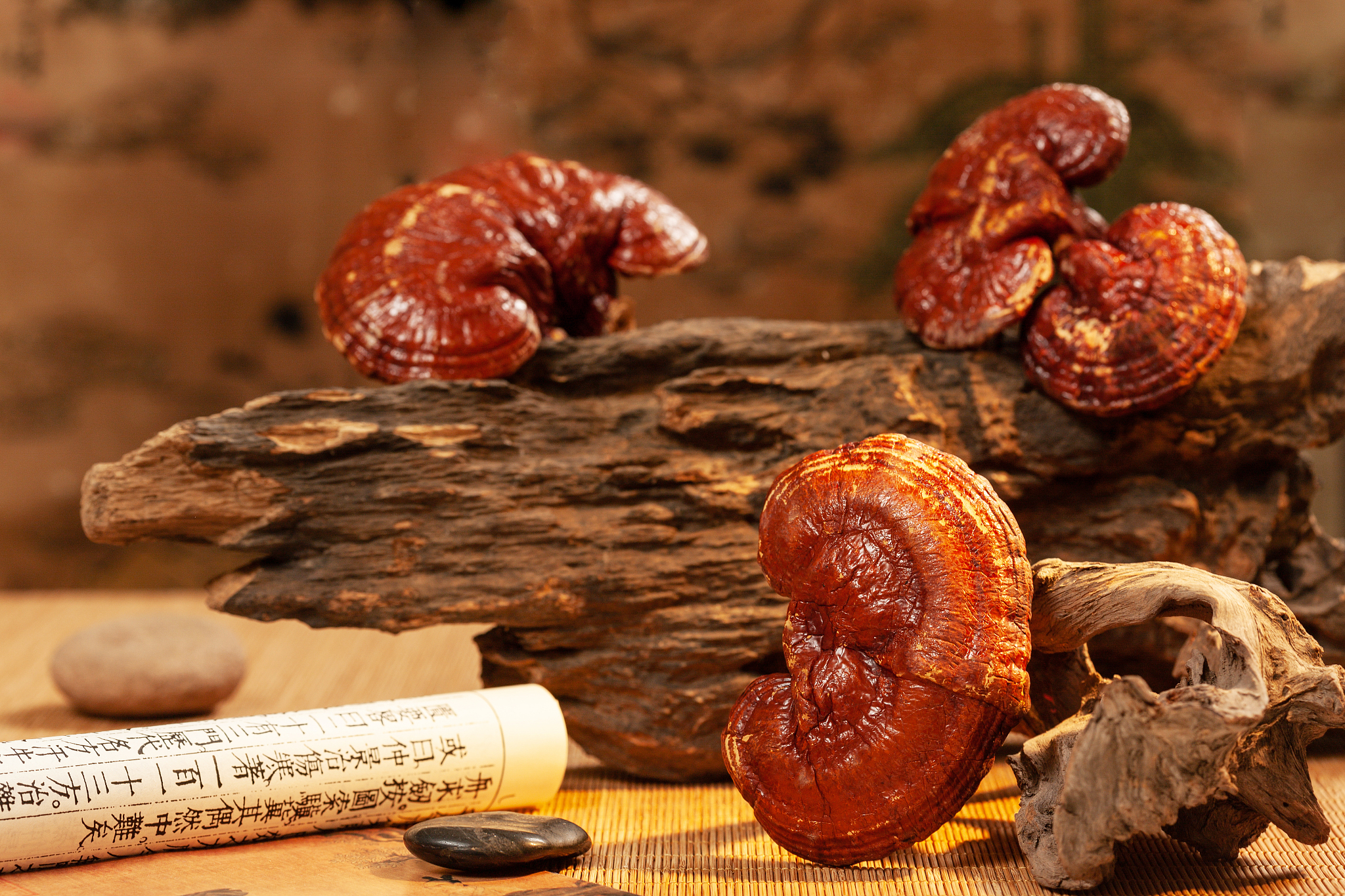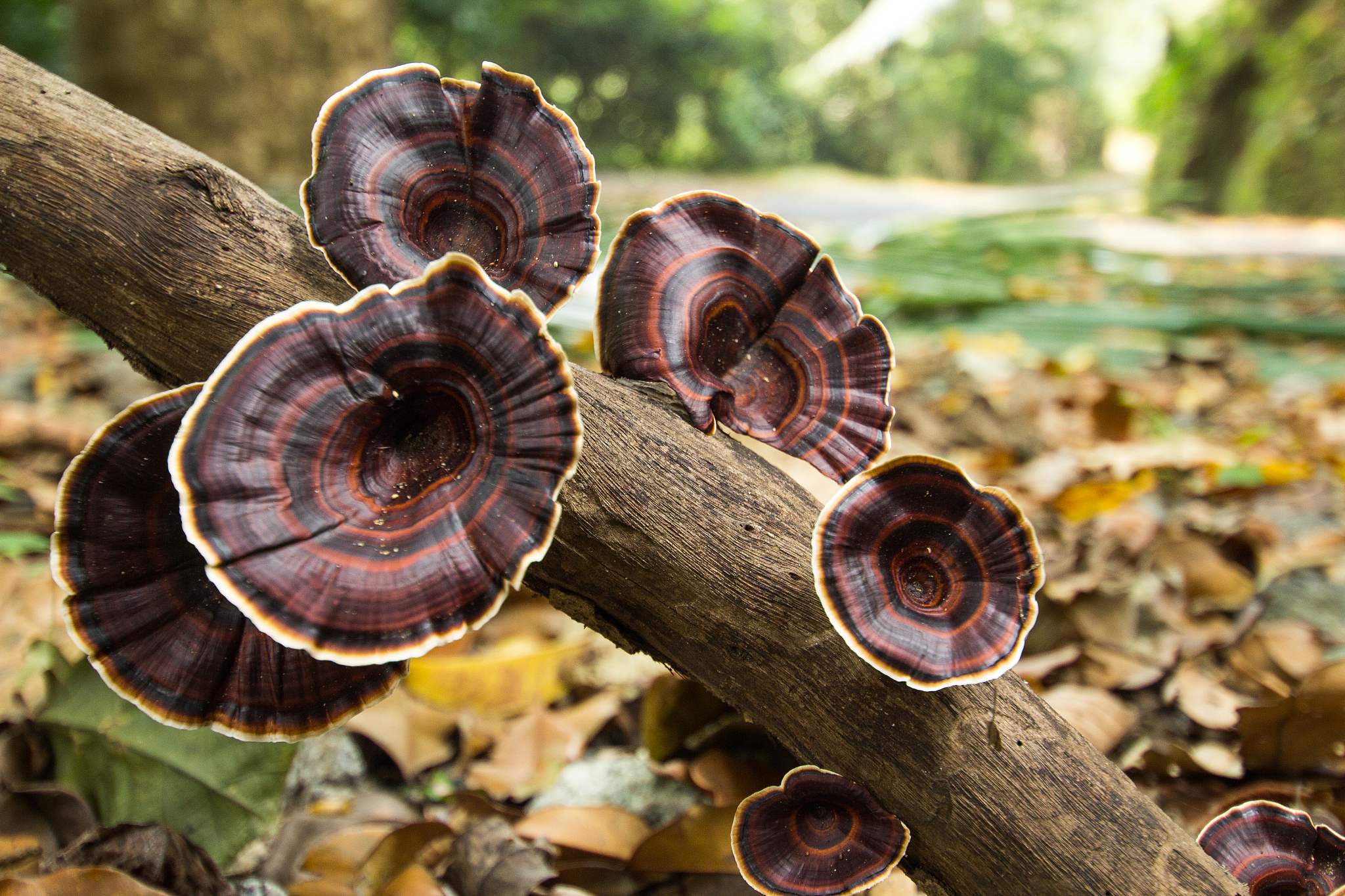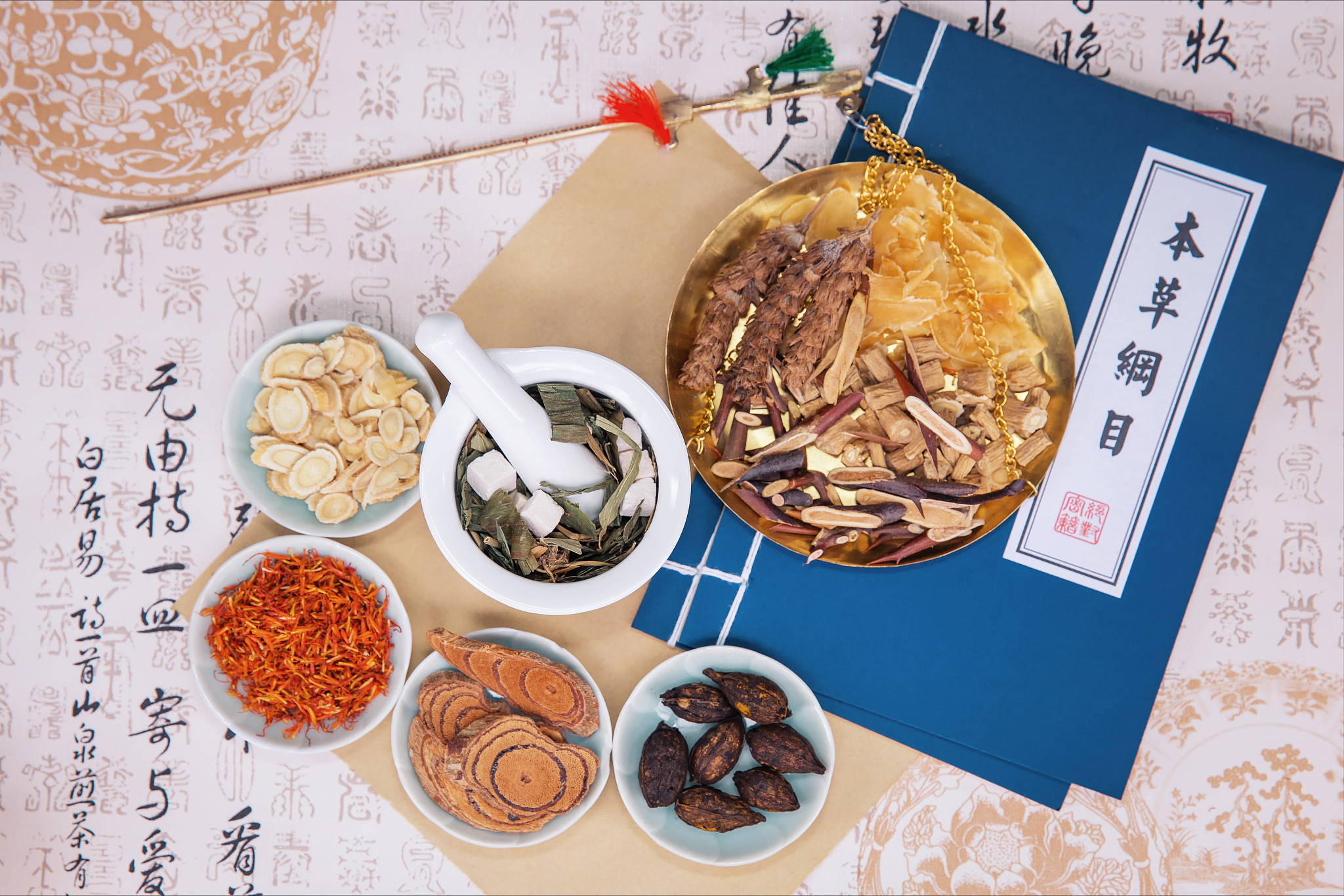According to "The Classic of Mountains and Seas," during the Neolithic period, Emperor Yan's favorite daughter, Yaoji, who had a pure heart and a beautiful face, died at an early age. After death, her soul floated to the Gu Yao Moutain and became a kind of plant on the mountain, which turned out to be the lingzhi mushroom. Interestingly, whoever ate this kind of plant could meet the one they miss, in dreams.
As a treasure of health preservation, lingzhi mushroom was loved by emperors of various dynasties in Chinese history. Wang Anshi, politician and litterateur of the earlier Song Dynasty (960-1127), wrote in his work "Zhi Ge Fu" that hundreds of thousands of lingzhi mushrooms were sent to the imperial court each year.
Due to its medicinal and healing qualities, the lingzhi gained the reputation as the ancient "mushroom of immortality," revered for over 2,000 years.

Six kinds of lingzhi mushrooms were recorded in Li Shizhen's work "Compendium of Materia Medica": green, red, yellow, white, black and purple lingzhi mushrooms. He wrote that lingzhi mushrooms were mainly used to improve eyesight, nourish liver, calm the mind, vitalize "qi" (life force, an underlying principle in Chinese traditional medicine and martial arts), solve chest stagnation, relieve cough, strengthen the muscles and bones, etc.
According to the "Chinese Pharmacy Dictionary," consuming these mushrooms can nourish and strengthen the body and also invigorate the brain, tonify the kidney, diminish inflammation and improve urine flow.

The fruiting bodies of lingzhi mushrooms, which have a sweet taste and a neutral nature, are usually used as medicine.
Lingzhi mushroom (Ganoderma lucidum) belongs to the Kingdom Fungi. It's mainly distributed in Zhejiang, Fujian, Guangdong, Jiangxi, Hunan, Anhui, Guizhou, Heilongjiang, Jilin and other provinces. It usually grows in mountain forests with high humidity and low light.
It can be found on rotten trees or their roots.

About The Great Herbs series:
Chinese herbal medicine is the precious legacy of the Chinese people's struggle against diseases for thousands of years and the essence of Chinese culture accumulated over thousands of years. The "Compendium of Materia Medica," written by Li Shizhen, is a valuable heritage of ancient Chinese medicine and botany, which has played a significant role in promoting the development of medicine and pharmacy in China and even the world. In this series, CGTN guides you through the journey of exploring the great herbs mentioned in the book.
For more:
The Great Herbs: The first of China's nine immortal herbs
The Great Herbs: The buster of blood
Chinese ground orchids help control rocky desertification in SW China
The Great Herbs: Flowers with two colors
The Great Herbs: The king of hundreds of herbs
(All images via VCG)
(If you want to contribute and have specific expertise, please contact us at nature@cgtn.com.)

